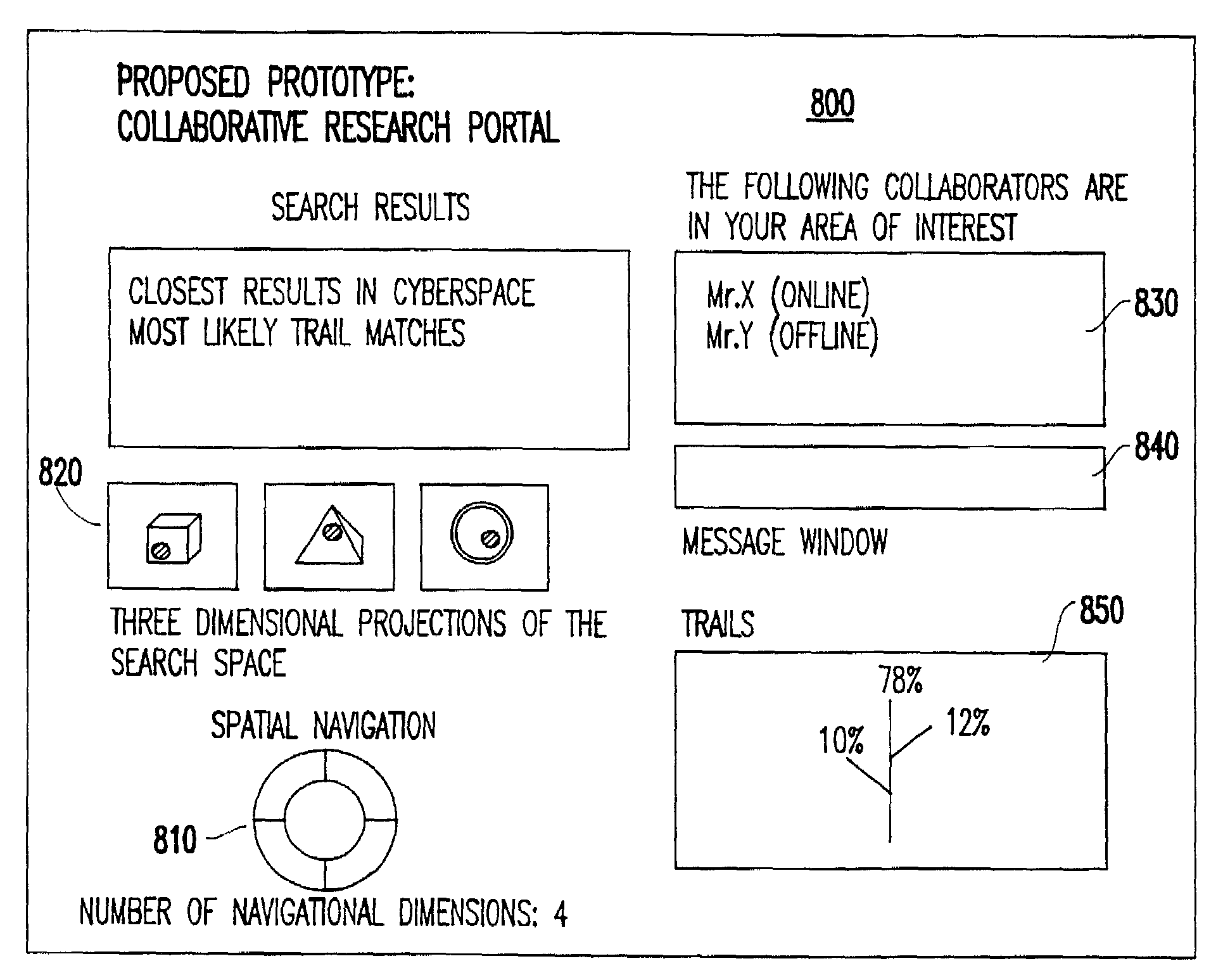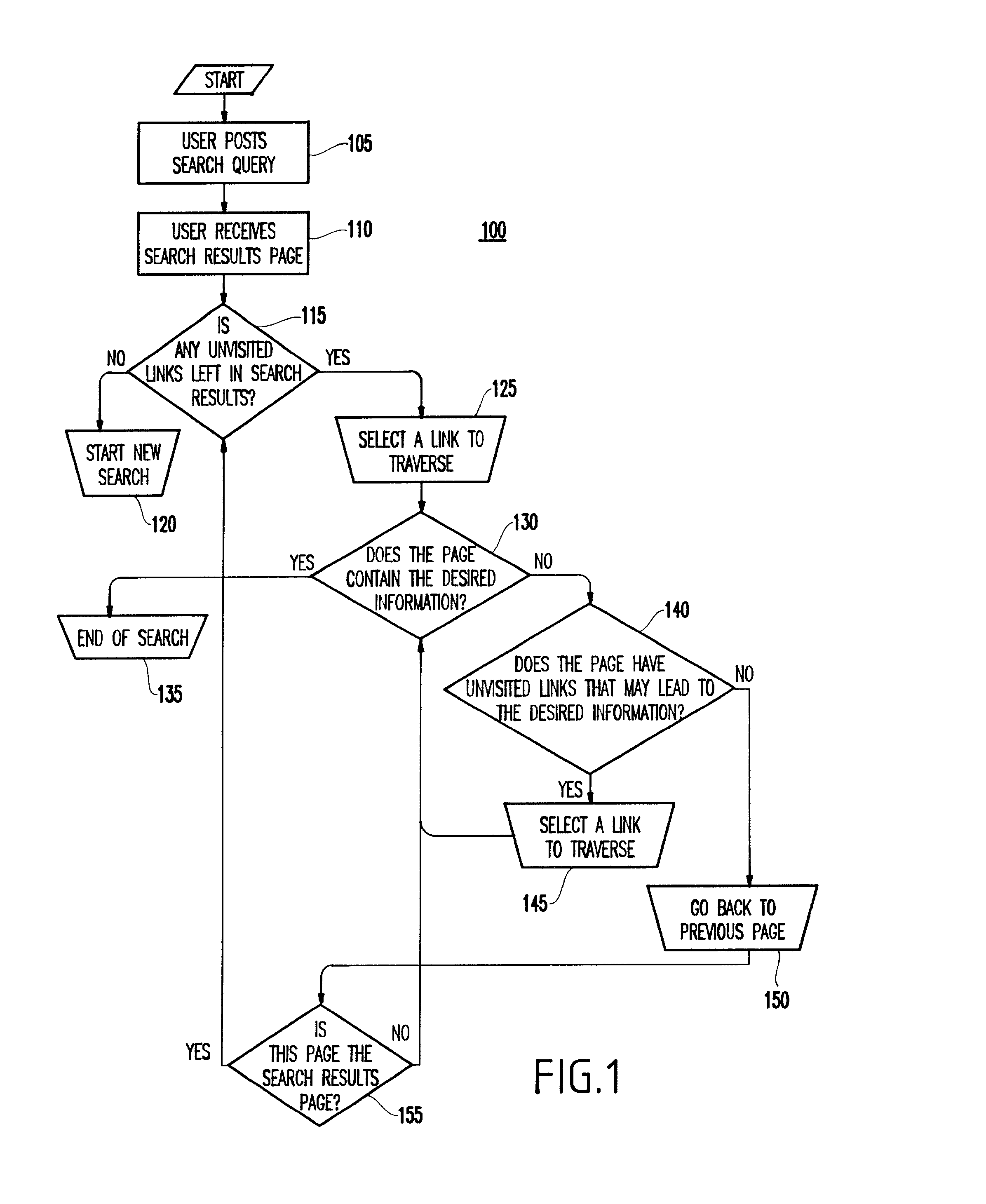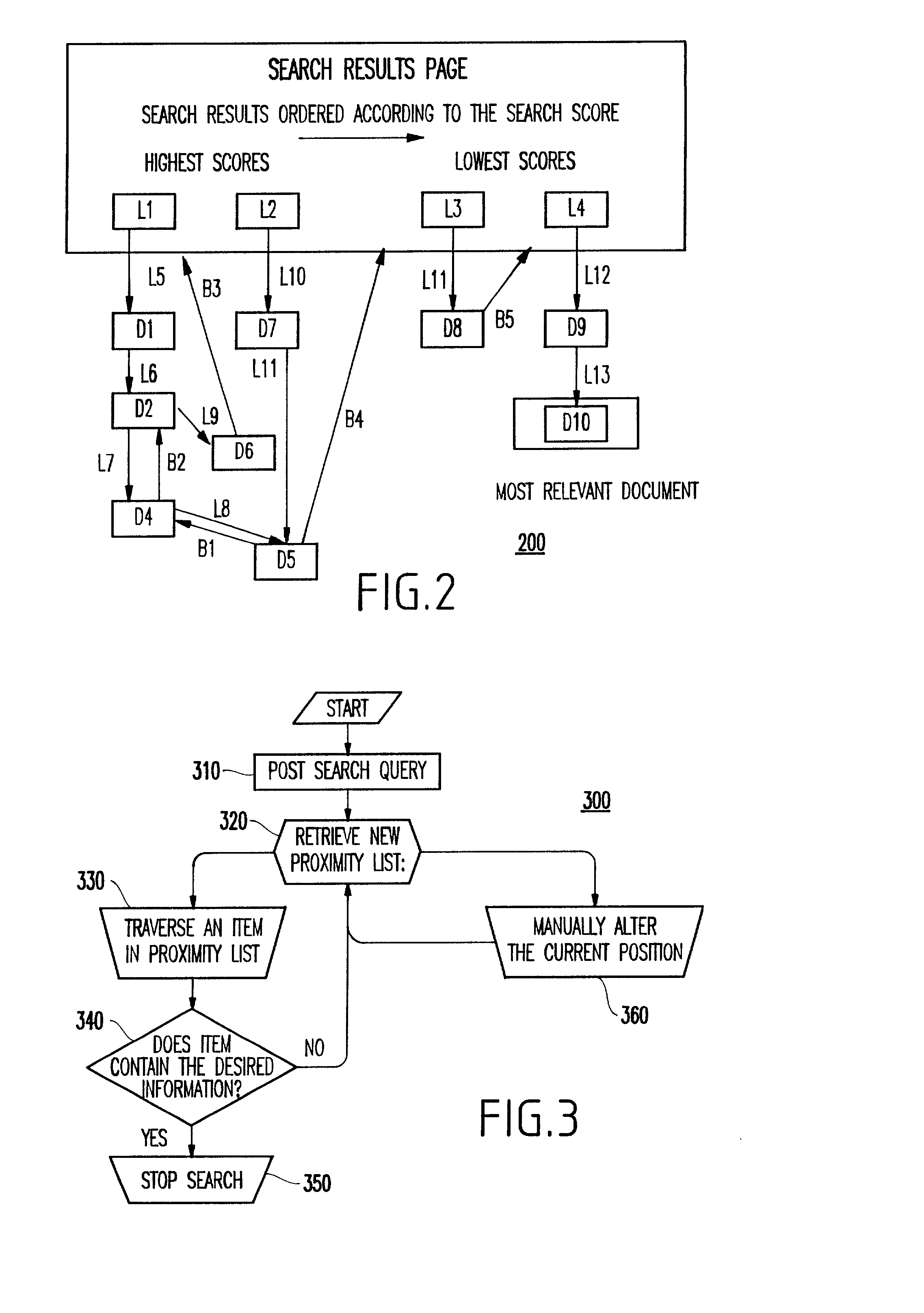Method and system for collaborative web research
a collaborative research and web research technology, applied in the field of information indexing and its retrieval, can solve the problems of inefficient, reliable method of determining, no efficient way to present user information, and difficult search engine, and achieve the effect of efficient collaborative research
- Summary
- Abstract
- Description
- Claims
- Application Information
AI Technical Summary
Benefits of technology
Problems solved by technology
Method used
Image
Examples
first preferred embodiment
[0064]Turning now to FIG. 3, hereinbelow, a spatial web navigation process 300 according to the present invention solves the above and other problems.
[0065]In contrast with the conventional navigation technique described above, the spatial navigation technique utilized in the present invention does not rely exclusively in the traversal of links in order to retrieve documents from the World Wide Web. That is, the inventive distance function allows the invention to move from one page to another without traversing a link (e.g., without opening up a document by clicking with a browser or the like).
[0066]In the spatial navigation model of the invention, the data blocks (Web pages, pictures and so forth) are indexed such that each data block resides in a specific point in a N-dimensional coordinate system. The placement of the data blocks in this coordinate system is performed such that data blocks which are relatively “close” to each other are related to the same subjects.
[0067]The “clos...
second embodiment
[0118]FIG. 7 illustrates a graphical user interface 700 according to the present invention, which provides the human user the ability of controlling the parameters of the search procedure described herein.
[0119]The spatial navigation interface 700 includes “Search criteria”710, a proximity list 720, as well as a window 730 indicating human researchers who are in the area of interest and whether they can be contacted on-line or off-line and their contacts numbers / addresses, a message window 740, and “Trails”750.
[0120]The window 710 allows the user to enter weights for a number of search terms. The weights are used as spatial values with the axis corresponding to each search term, and the list of weighted terms is then translated to a point in the N-dimensional space. This point defines the position where the user is first placed within the search space, and will determine the first proximity list sent to the user. After being placed in this original point of search, the user can move...
third embodiment
[0129]Referring now to FIG. 9 (as well as to FIGS. 7 and 8 illustrating graphical user interface facilities) in a third embodiment, a predictive Web caching portal is provided which is an application of the N-dimensional indexing scheme described above, and which is capable of predicting which document is most likely to be retrieved by a specific user.
[0130]The Web caching portal of the invention uses this capability to automatically download the most likely documents to the client browser before they are requested by the user, thereby greatly reducing the response time experienced by the user for retrieving documents.
[0131]The predictive Web portal according to the present invention utilizes the N-dimensional space indexing technique described above to construct an indexed database of documents which are to be retrieved by the human researcher. The predictive web cache is based on a distance function which is partly derived from the Euclidean distance of documents in the N-dimensio...
PUM
 Login to View More
Login to View More Abstract
Description
Claims
Application Information
 Login to View More
Login to View More - R&D
- Intellectual Property
- Life Sciences
- Materials
- Tech Scout
- Unparalleled Data Quality
- Higher Quality Content
- 60% Fewer Hallucinations
Browse by: Latest US Patents, China's latest patents, Technical Efficacy Thesaurus, Application Domain, Technology Topic, Popular Technical Reports.
© 2025 PatSnap. All rights reserved.Legal|Privacy policy|Modern Slavery Act Transparency Statement|Sitemap|About US| Contact US: help@patsnap.com



